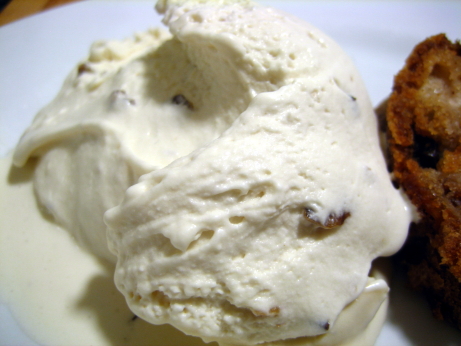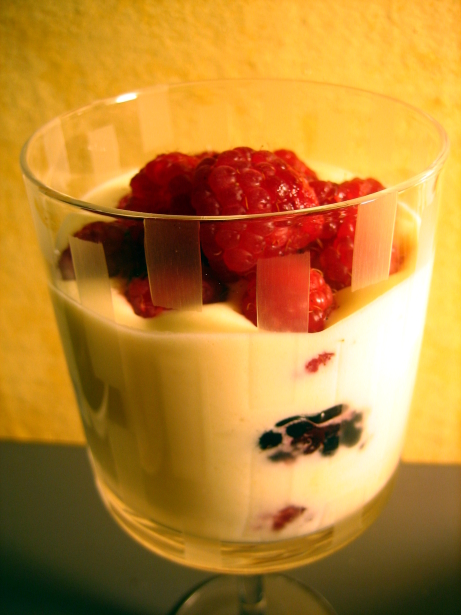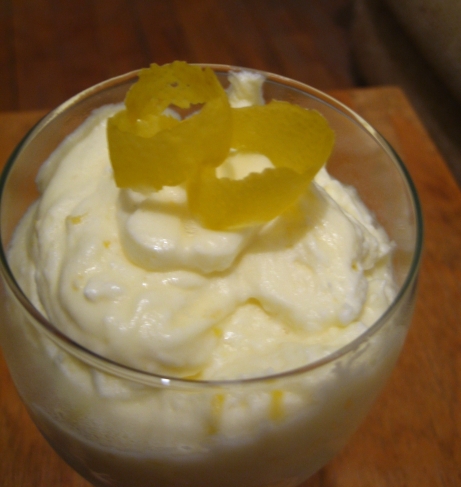People asked me what I wanted for Christmas this year, and I told them that my heart’s fondest desire was an ice cream maker. Somehow this struck my extended family as hilarious. My dining companion, who had a lot to do with me getting a Kitchenaid mixer the previous Christmas, understood that I wasn’t joking, and got me the ice cream attachment for said mixer. She saved Christmas.
My mother occasionally made us ice cream as kids, but her machine is hand cranked. After the novelty wore off, the prospect of working that handle for twenty minutes every time we wanted a scoop of vanilla turned out to be more than a mother of three wanted to deal with. Her machine has been sitting safely in the cold room for the past fifteen years. By contrast the Kitchenaid attachment is completely painless. The only difficult thing is to remember to put the mixing bowl in the freezer the day before you want to use it. In my dream house with a second freezer the bowl will just live in there. I don’t want to shill for Kitchenaid, but I love my mixer. If our apartment was burning my first priorities would be to get my dining companion and the cat out, then I’d go back for the mixer.
I decided to start my ice cream experimentation with an old favorite, maple walnut. The recipe starts by reducing grade B maple syrup in a pot, then adding heavy cream, milk, and salt and bringing to a boil. Some of that hot syrup mixture is used to temper eggs, then the proto-custard goes back on the heat to thicken. As soon as it’s nappe the mixture is strained and chilled. The custard then goes into the ice cream maker, and when it’s partially frozen chopped toasted walnuts are added. The finished ice cream is still soft so it needs to spend a few hours in the freezer to harden.
This ice cream is incredibly rich, think Häagen-Dazs with some added fat. The ratio of dairy is 2 cups heavy cream to 1 cup whole milk, and that makes for some very creamy, very fatty, ice cream. Usually I’d fully support more fat in ice cream. I get saturated on ice cream very quickly, so that after about six bites I’m finished. I’m completely OK with making those six bites count by making them as decadent as possible. However, when I’ve got 1 1/2 quarts of it sitting in my freezer this insane richness becomes a problem. I fed most of it to guests, but I still had more than my fair share.
The maple and walnut flavours were really well balanced, I don’t like ice cream with too many chunks, and this recipe got the concentration just about right. The maple flavour permeated nicely, but as one epicurious poster suggested a final swirl of partially incorporated maple syrup would have been a nice touch. I’m lucky enough to live in Quebec, where some massive percentage of the world’s maple syrup supply is produced, so finding grade B syrup was as easy as walking to the local grocery store. Unfortunately those of you not living around here may have trouble getting your hands on it. It really is important to get this darker grade of syrup, as it has much more maple flavour. An imperfect substitution is to reduce the more commonly available grade A syrup to 2/3 of it’s original volume (since this recipe calls for reducing a cup of grade B to 3/4 of a cup, just reduce grade A by half). It should go without saying that fake maple syrup, or as we call it sirop de poo-poo, just won’t do.
As a first go with the ice cream maker I’d declare this a success. The flavour and texture were right, and while the richness became overwhelming quickly, those first few bites were lovely. If I didn’t have 40 different types of ice cream to get through, I’d make this one again.


